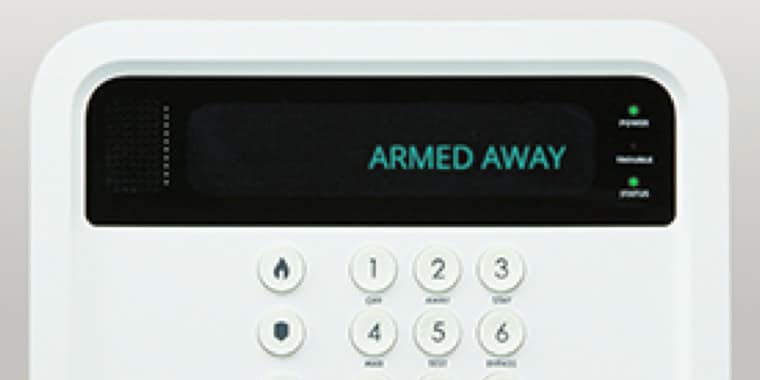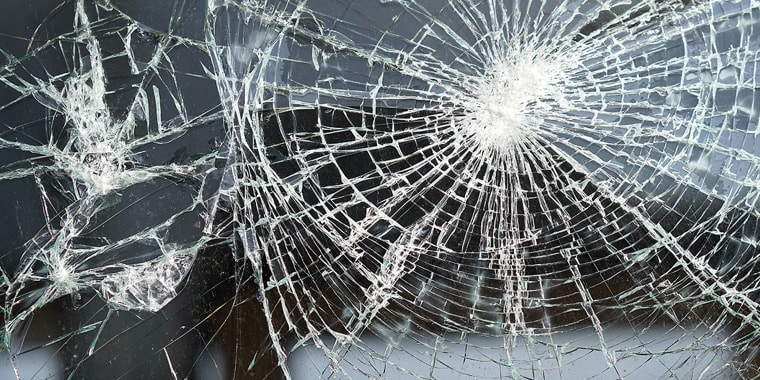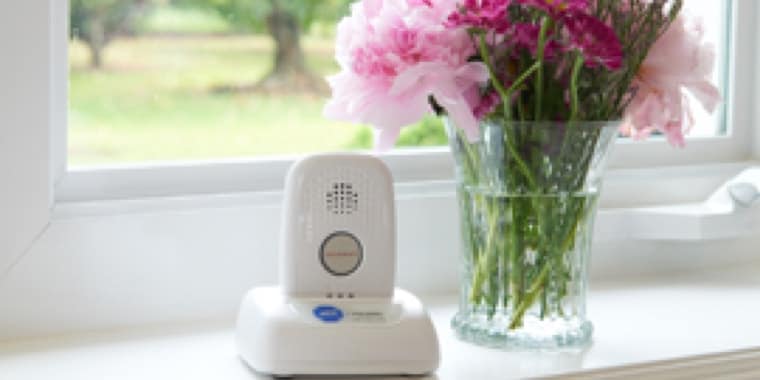There were an estimated 1,401,840 burglaries in the United States in 2017. While protecting yourself and your family from a home invasion is an essential part of home security, there are also a number of other potential hazards that you can face that don't have anything to do with an intruder.
In the United States, the top five most fatal household injuries are poisoning, falls, suffocation or choking, drowning, and burns or fires.
What can you do to keep your family safe when they are at home?
We've put together a comprehensive home safety checklist to help you along when you're inspecting your home for hazards.
Home Safety Checklist
Your home should be the place you feel safest in the world. There are a number of things you can do to ensure that this is true. Before we break our safety checklist for home down into separate rooms, let's take a look at some general safety necessities.
Secure, Updated Locks
If there are any locks on your home that don't function properly, replace, repair, or supplement them. All exterior doors should have deadbolts, as they are the most difficult box to break. If there are any pre-existing locks on your home, have them rekeyed when you move into a house.
You also might consider installing a video doorbell camera, as it can greatly improve your ability to monitor and control visitors.
Functional Windows
Take a look to see if any of your windows have broken locks. On top of that, make sure that they cannot easily be forced open. You do not necessarily need to completely replace a window that has a faulty lock, as you can instead buy and install replacement locks.
If you live in a highly vulnerable area, you might consider adding window bars. You can also insert metal rods in sliding window tracks which make it difficult to shimmy them open.
Extra Keys
Each independent household member should have their own key copy. You also want to make extra copies and give them to somebody that you trust in the case of a lockout or an emergency.
Safe
It is important that you have a place to keep documents and valuables. Things like birth certificates, passports, deeds, property titles, and more should be in a fireproof, waterproof safe. You also want to choose a safe that is difficult to tamper with and talk to carry away.
Smoke Detector and Carbon Monoxide Detector Placement
The first line of defense you have against some of the most destructive and dangerous incidents are smoke alarms and carbon monoxide detectors. On top of that, most home insurance policies will require that you have them.
Home Security Systems
The absolute best way to monitor and respond to security breaches at your home in real-time is an all-inclusive home security system. These systems often have features such as surveillance cameras, glass break detectors, motion sensors, and more. These days, security systems can also be integrated with home automation devices and can be accessed remotely using a laptop or a smartphone.
Window Covers and Privacy Protection
Covering your windows is not just an aesthetic home decor decision. This is also a matter of safety. When you add covering to your windows, it can help to protect your family and all of your valuable belongings from prying eyes.
Make sure that any bedrooms and common areas have blinds, curtains, or shades. Additionally, any common areas that can be viewed from the outside should also have window coverings.
Lighting
Lighting can benefit your home safety in a number of different ways. First, it can help to illuminate the outside when it's dark in a way that can help prevent everyday accidents. Second, it can help to create the impression that someone is at home in the house even when no one is.
You'll want to make sure that you have working lights in all of the locations where they are necessary. This includes hallways, exterior doors, and dark stairways. On top of that, motion detector lights are a great way to deter would-be robbers.
Personal Safety Checklist
Safety isn't just about preventing problems, but it's also about being able to deal with them quickly and effectively when they pop up. For this reason, make sure you have these things so that you and your family can stay safe no matter what happens.
First Aid Kit
It is a good idea to have a thorough first aid kit in your home. This goes beyond simple home safety items such as bandages and antibiotic agents.
You can either purchase an all-in-one kit or you can build your own first aid kit. You'll want to make sure that you have backups for any medical items that are specifically relevant to your household's health needs. For example, if someone has severe allergies, make sure you have an extra EpiPen.
Fire Extinguishers
Fire extinguishers are effective against small electrical fires and grease fires. This is because they don't spray water, but instead spray dry chemicals. For this reason, they are recommended for home use.
Spraying water on electrical fires or grease fires can actually make them worse. It's a good idea to have at least two dry chemical fire extinguishers in your home, keeping one in your kitchen and one close to your dryer or in your garage.
Emergency Preparedness Kit
As the saying goes, "hope for the best and prepare for the worst." It is a good idea for any homeowner or renter to have an emergency preparedness kit in case you have to go without power or other utilities for a period of time.
Some of the basic home safety items that you will want to have in this kit include candles, lighters, matches, batteries, and flashlights. You also might consider keeping an extra stock of bottled water and nonperishable food.
You could also choose to have a backup electric generator for your home. It's always a good idea to pay attention to any extreme weather predictions that might affect your area so that you can prepare ahead of time.
Room By Room Home Safety Checklist
If you are wondering how to make your home safe, it's a good idea to go room by room. The safety checklist for home takes a look at the specific circumstances of the typical household so that you can know that your family is as secure as possible.
Kitchen Safety Checklist
There are a number of potential hazards in every kitchen. Some of the things you will want to do to ensure the safety of your kitchen are:
Inspect electrical appliances: It's good to periodically make sure that your appliances aren't posing a safety hazard due to age, improper installation, or damage
Check range hood: You want to make sure that the fan and the range hood are free of greasy buildup and fully vented
Clean coils and vents: Make sure to back him and wipe down all appliance vents and coils, as these are some of the most common fire hazards
Check water filters: It is absolutely crucial about your drinking water is clean, so it is a good idea to regularly check your water filters
Ensure that your circuits are not overloaded: Many of the major appliances in your home use enough energy that they could trip the main breaker of your house, which could potentially lead to an electrical fire
Inspect the garbage disposal and drains: It is a good idea to regularly make sure that the garbage disposal is working properly and that clogs and buildup don't exist in your kitchen sink
Install safety latches: One important item on our home safety checklist for children is to make sure that dangerous household items are safely out of reach
Purchase a fire extinguisher: Cooking equipment is responsible for almost half of all home fires, so it's a good idea to have a fire extinguisher and know how to use it
Test carbon monoxide and smoke detectors: Regularly test both of these detectors throughout your house to make sure that there isn't any dust on the sensors and to change the batteries if necessary
Post an emergency contact list: This can help to ensure that calling for help is easy during a stressful situation
A kitchen is a place where you and your family can come together, cook, and enjoy a wonderful meal. However, there are also a number of potential hazards to the kitchen beyond injuring yourself when cutting vegetables, including fire hazards and the risk of electric shock.
Bathroom Safety Checklist
If you're wondering how to make a safer home, the next room to inspect are the bathrooms in the house. Some of the actions you'll want to perform include:
Test faucets and toilets: Make sure there aren't any drips or leaks and make sure that the toilets empty and refill completely when flushed
Inspect pipes: Make sure pipes don't have corrosion, rust, or signs of leakage
Test and clean showerheads: Look into the water pressure and temperature of each showerhead
Locate the main shut-off valve: You will most likely find the main shut-off valve to the water system in your home under the kitchen or bathroom sink
Check caulking: Look for holes, cracks, or sign of mold or mildew in the caulking around the shower and tub as well as around the bathroom tiles
Secure medications: It's important that over-the-counter and prescription medications are kept in a locking box or medicine cabinet
Purchase a first-aid kit: Every household should have a fully-stocked first aid kit that is kept in a central place
Prevent falls: A common household accident is slipping in the shower or tub, so you might consider adding grab bars, non-slip bath mats, and non-slip decals
Making sure that there aren't issues with your plumbing can help prevent flooding or other issues. Knowing where the main-shut off valve is important in the case of an emergency.
Basement Safety Checklist
Even if you don't spend much time in the basement, it's likely the home of many of your house's systems. Take this checklist to the basement with you to make sure that everything is in working order:
Get to know the electrical system
Tune-up the HVAC system
Clean air ducts and vents
Inspect the water heater
Change air filters
Insulate exposed pipes
Look for foundation damage
Check for drafts
Add proper lighting
Check window and door locks
Secure handrails
Add non-skid tape to stairs
You want to make sure the systems in your basement are functioning properly and not posing a potential hazard. On top of that, it's important to make sure that the basement is accessible and easy to navigate so that you avoid the risk of injury.
Hallway Safety Checklist
You'll want to make sure that your hallway is free of tripping hazards and well-lit even at night. Secure your rugs to help avoid people tripping over them, and add night lights so no one has to stumble down a dark hallway.
Outside Safety Checklist
While some of the things you'll want to do for outside safety have already been mentioned in this article, there are a few more to add to your list. These include:
Inspect the roof
Inspect gates
Inspect rain gutters and downspouts
Repair exterior damage
Check window screens
Prune trees and plants
Lock up hazardous materials
Make your house numbers visible
Secure tools
Keeping the outside of your property in good working order can help prevent damage to your home as well as theft.
This home safety checklist is simply a general list to help you design
How to Make a Safer Home: Is It Time to Install a Security System at Your House?
In reading this list, it's possible that you feel overwhelmed by how many potential hazards exist in your home. However, using this list in a regular and seasonal way can actually help you to relax when you're at home because you know you've taken the necessary steps to ensure a safe environment.
One of the most important things you can do to keep your family safe is to install a home security system. Take a look at our ADT home security systems today.
Related Articles
1. "U.S. Fire Statistics." U.S. Fire Administration. July 09, 2018. Accessed August 20, 2018. https://www.usfa.fema.gov/data/statistics/
2. "Installing and Maintaining Smoke Alarms." NFPA. Accessed August 20, 2018. https://www.nfpa.org/Public-Education/By-topic/Smoke-alarms/Installing-and-maintaining-smoke-alarms.
3. "Safety Facts on Scald Burns." The Burn Foundation - www.burnfoundation.org - Scald Burns. Accessed August 21, 2018. http://www.burnfoundation.org/programs/resource.cfm?c=1&a=3





